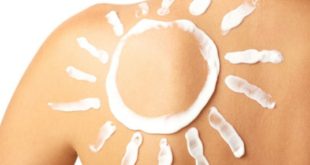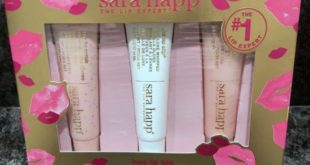
“If you made a Venn diagram of teen cancer patients and drag queens, eyebrows, color correction, and eyelashes would all be in the center,” says Scarlet Envy over Zoom, before moving on to the heart of the day’s virtual meeting. But first a note about “realness,” which in Scarlet’s world is a ball term that refers to embodying a different gender or profession so perfectly an audience would never know the difference. In Scarlet’s makeup classes with Teen Cancer America realness is part of the curriculum, whether that means camouflaging illness or connecting through play.
When TCA originally reached out to Scarlet, the plan was to do a series of in-person makeup classes. The nonprofit partners with hospitals throughout the US to develop specialized protocol and programming for young adults because, as TCA’s Executive Director Simon Davies tells me, “Too many young people with cancer don’t fit into the traditional molds of children or adult hospitals—they need their own place and the opportunity to connect.” A makeup lesson with a Drag Race alum would be the perfect balance of helpful expertise and fun silliness. “I don’t have a degree in makeup, but I know what works for my face,” adds Scarlet. “I think [the class] is really about getting lost in self love.”
When COVID hit, TCA pivoted to virtual rather than canceling the class altogether. Scarlet admits there was a bit of a learning curve—it’s tricky to guide a class of 15 without being able to offer hands-on help. But she also recognizes that meeting up online is a necessary form of connection for teens who are particularly vulnerable to the coronavirus. A representative from TCA shares that a digital class was able to also be a more inclusive one—a few participants who wouldn’t have been able to attend in-person (even sans-pandemic) were able to follow along from their hospital beds.
After registering for the free class, each participant receives a swag bag of donated beauty products Scarlet teaches them to use. Wigs are also supplied to anyone who has lost their hair. Not-so-coincidentally, Scarlet’s a pro at putting on a wig. (She’s much more seasoned at it than any makeup artist you’d find at a beauty counter or even a photoshoot, because it’s an integral part of her art.) Which brings us back to that beauty Venn diagram Scarlet mentioned—there are a lot of reasons why a drag queen is the perfect shepherd to guide this group of teens to beauty nirvana. Below, find the tips she thinks everyone should know.
Brows
“This class is for survivors and those who are currently going through treatment, so most people will have a little bit of eyebrow,” says Scarlet, who advises that a little bit of texture or shape can be helpful to start. But it’s also OK if they don’t really have eyebrows—a lot of the time, drag queens shave their eyebrows off to work with a bare canvas. Scarlet personally likes to block out half of her brows with Elmer’s glue, powder, and foundation when she gets into drag. All of that is to say, drag queens know how to build up a brow from nothing. To figure out the best, most natural brow shape for each person’s face, Scarlet asks participants to grab a makeup brush and place it straight up and down right next to their nostril. “With a little bit of Tarte brow pomade on a second brush, make a dot on your brow bone where the first brush sits, then angle it to the middle of your iris and make another dot, then angle it one more time to the edge of your eye and make a third dot,” she explains. It’s important that the edge of the brush you’re using as a guide touches your nostril throughout.
Next, fill ‘em in. “I’m a big proponent of using your hand to warm up your product and make sure your brush isn’t too oversaturated—if your wrist doesn’t look like a Picasso at the end of your beauty regimen, you’re doing something wrong.” Using the pomade and a thin, angled brush, Scarlet advises folks to connect the three dots they just drew and then bulk up that line to their heart’s content. “I love a bushy ‘80s supermodel brow, but I have just as much love for that early 2000s pencil-thin Pamela Anderson moment,” she explains. To finish off the look, she instructs her class to set the pomade with a powder or eyeshadow in the same tone (“We never want our eyebrows moving around”), and add a subtle highlight to the brow bone. “The difference between the matteness and the dewiness helps separate a drawn-on brow from the rest of the skin.”
Color Correction
As Scarlet explains, a common side effect of chemotherapy is a blueing or graying of the skin. “Drag queens have a beard that we need to shave and color correct, because it leaves a blue-gray cast.” To color correct, Scarlett recommends using the color opposite the one you want to cancel out on the color wheel—for blue tones that’s a peachy orange, for deep green shades it’s more of a red. The warmth of these color correcting shades also helps counteract the grayness that’s visible when you’re not feeling well. “After applying a creamy color corrector, set that with a powder, and then you can go forward with your foundation.” Scarlet emphasizes that if you have dark circles or discoloration anywhere, you can use the exact same technique.
Lashes
Lashes are… tricky. Even for a seasoned drag queen. But as Scarlet points out, it’s even tricker if you don’t have a base layer of natural lashes to anchor the falsies—it takes some trial and error. Scarlet’s TCA class actually uses lashes from Loveseen, which were made with sparse natural lashes in mind. As founder Jenna Lyons shared in her Top Shelf, a genetic disorder that caused her to lose her natural lashes inspired her line of lash strips that “can work for me, and can also work if you do have natural eyelashes.” Scarlet uses Duo glue to adhere them, and has a few pointers on application technique. “The transparent is better than black, because you won’t be able to see it when it dries, and I also suggest getting the brush-on version,” she says. “If you already have the one in a tube, squeeze a little on your hand and kind of dab the lash through it to make sure you don’t use too much.” After applying the glue, Scarlet recommends letting it get tacky before sticking it onto your eyelid. Finally, hold the lashes in the corners and center of the lid as they dry. “Lashes have a bad habit of lifting,” she adds, “it’s something you just have to get used to.”
Brands that donated product to TCA’s makeup class include Tarte, Benefit, Loveseen, Col-Lab, Believe Beauty, Zeal Cares, MAC, Colourpop, Glossier, Arda Wigs, Pixi, and BH.
Photo courtesy Teen Cancer America



